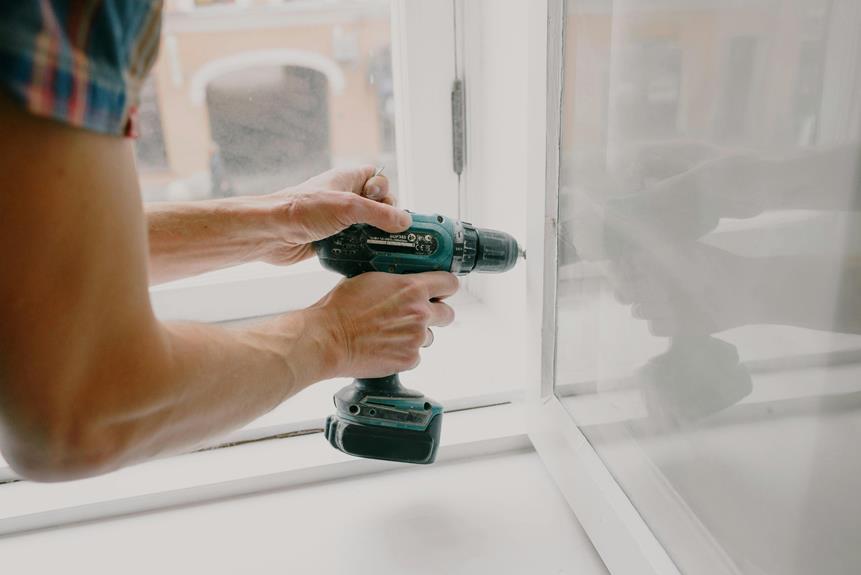As a homeowner, it’s essential to recognize the significance of budgeting for home repairs and maintenance. Once you’ve settled into your dream home, the reality of maintaining it sets in. Home repairs and maintenance can be a constant source of concern and expense.
Whether it’s a leaky roof, malfunctioning appliances, or regular upkeep such as painting and landscaping, the costs of maintaining a home can quickly add up.
By proactively setting aside funds for these expenses, homeowners can avoid financial strain and ensure that their property remains in optimal condition.

Assessing Repair and Maintenance Needs
When assessing your repair and maintenance needs, it’s important to thoroughly inspect your home to identify any areas that require attention. Regular inspections are crucial for maintaining your home’s overall condition and preventing major issues from developing.
Start by examining the exterior of your home. Look for any signs of damage or wear on the roof, siding, and foundation. Check for cracks, leaks, or missing shingles that could lead to water damage or structural problems. Inspect the windows and doors for any gaps or drafts that may affect energy efficiency.
Next, move indoors and inspect each room individually. Pay close attention to plumbing fixtures, electrical outlets, and appliances. Look for leaks, loose connections, or faulty wiring that could pose safety hazards. Check the walls, ceilings, and floors for any signs of water damage, cracks, or uneven surfaces.
In addition to visual inspections, it’s important to listen for any unusual sounds or vibrations that could indicate potential problems. Take note of any odors, such as musty smells or gas leaks, as they may require immediate attention.
Estimating Costs for Necessary Repairs
To accurately estimate the costs for necessary repairs, you need to thoroughly evaluate the extent of the damage and consult with professionals for their expert advice. This will help you determine an accurate timeline for the repairs and find reliable contractors to complete the work.
When assessing the damage, consider both the visible and hidden issues. Look for signs of damage like cracks, leaks, or wear and tear. It’s important to not only address immediate repairs but also consider any potential future repairs that may arise as a result of the current damage.
Consulting with professionals is crucial in estimating repair costs. They have the knowledge and experience to accurately assess the extent of the damage and provide you with an estimate of the repair costs. They can also advise you on the timeline for completing the repairs and help you find reliable contractors who can efficiently handle the job.
Finding reliable contractors is essential to ensure that the repairs are done properly and within the estimated timeline. Ask for recommendations from friends, family, or neighbors who have had similar repairs done.
Research online reviews and ratings to determine the reputation and reliability of contractors in your area. It’s also advisable to get multiple quotes from different contractors to compare prices and services.
Prioritizing Urgent Repairs
Once you have estimated the costs for necessary repairs, the next step is to prioritize urgent repairs based on the severity of the damage and potential risks they pose to your home. It’s important to identify critical repairs to ensure the safety and well-being of your living space.
Regular inspections play a vital role in identifying critical repairs. These inspections help you detect any issues early on before they escalate into major problems. By conducting regular inspections, you can spot signs of damage or wear and tear, such as cracks, leaks, or electrical issues.
This proactive approach allows you to address these problems promptly, preventing them from becoming urgent or costly repairs.
When prioritizing urgent repairs, consider the potential risks they pose to your home. Some repairs may threaten the structural integrity of your house or compromise the safety of your family.
For example, a leaking roof could lead to water damage, mold growth, or even structural collapse if left unattended. Similarly, electrical problems pose a fire hazard and should be addressed immediately.
Researching DIY Options for Cost Savings
Consider researching DIY options to save on costs for home repairs and maintenance. By doing certain tasks yourself, you can significantly reduce the amount of money spent on professional services.
Here are four ways you can explore DIY options for cost savings in your home:
- Online Tutorials and Guides: Take advantage of the vast amount of information available online. Look for step-by-step tutorials, videos, and guides that provide detailed instructions for various home repairs and maintenance tasks. Learning how to do simple repairs yourself can save you a lot of money.
- Community Workshops and Classes: Many communities offer workshops and classes focused on DIY home repairs and maintenance. These classes provide hands-on training and expert guidance, giving you the skills and confidence to tackle a wide range of projects on your own.
- Borrow or Rent Tools: Instead of buying expensive tools for one-time use, consider borrowing or renting them from friends, family, or local tool libraries. This way, you can avoid the cost of purchasing tools and still complete your DIY projects effectively.
- Join Online DIY Communities: Connect with like-minded individuals in online DIY communities. These communities provide a platform for sharing knowledge, tips, and experiences, allowing you to learn from others and find cost-effective solutions to your home repair and maintenance needs.
Seeking Multiple Quotes for Professional Services
When hiring professional services for home repairs and maintenance, it’s important to get multiple quotes to ensure you get the best value for your money. By comparing prices and evaluating expertise, you can make an informed decision and feel confident in your choice of professionals.
Getting multiple quotes allows you to see the range of prices for the services you need, helping you avoid overpaying or being taken advantage of. It also allows you to evaluate the expertise of different service providers, ensuring you hire someone skilled and experienced in the specific areas you require.
To emphasize the importance of seeking multiple quotes, consider the following table:
| Service Provider | Price Quote ($) |
|---|---|
| Provider A | $500 |
| Provider B | $400 |
| Provider C | $600 |
| Provider D | $450 |
As you can see, the prices quoted by different service providers can vary significantly. By obtaining multiple quotes, you can choose the provider that offers the best value for your money. Seeking multiple quotes allows you to assess the expertise of each provider.
You can ask for examples of their previous work, read customer reviews, and ask for recommendations. This way, you can ensure that the professional you hire has the necessary skills and knowledge to effectively handle your home repairs and maintenance.
Creating a Monthly Budget for Maintenance Expenses
To effectively manage your home repairs and maintenance expenses, it’s important to create a monthly budget that allows you to allocate funds for routine upkeep and unexpected repairs. By having a clear plan in place, you can ensure that your home remains in good condition while also avoiding any financial surprises.
Here are four key considerations to keep in mind when creating your monthly maintenance budget:
- DIY vs Professional Services: Determine which tasks you can confidently handle on your own and which ones require professional assistance. While do-it-yourself projects can save you money, certain repairs are best left to the experts to avoid costly mistakes.
- Long-Term Maintenance Plan: Develop a comprehensive plan for your home’s long-term maintenance needs. Consider the lifespan of various components, such as the roof, HVAC system, and plumbing, and budget accordingly for their eventual replacement or repair.
- Prioritize Essential Repairs: Identify the most critical repairs that need immediate attention. These may include issues that affect your home’s safety, security, or functionality. Allocate a portion of your budget to address these priority repairs promptly.
- Create an Emergency Fund: Set aside a portion of your monthly budget for unexpected repairs or emergencies. Having a dedicated fund will provide peace of mind and ensure that you’re financially prepared when unexpected home maintenance issues arise.
Building an Emergency Repair Fund
Creating an emergency repair fund is essential for homeowners to be financially prepared for unexpected maintenance issues. To effectively manage this fund, it’s important to implement saving strategies specifically tailored for home repairs.
One strategy is to automate your savings by setting up a separate account solely for your emergency repair fund. This ensures that the money is readily available when needed. Consider allocating a certain percentage of your income, such as 5% or 10%, specifically for this fund.
Regularly assessing and adjusting the amount you contribute to your emergency repair fund is crucial. As your home ages, the likelihood of maintenance issues increases, so gradually increasing your contributions over time will better equip you to handle unexpected repairs.
Remember, the emergency repair fund should only be used for genuine emergencies. Avoid using it for non-essential expenses to maintain the purpose of having a dedicated fund for unforeseen home repairs.
Conclusion
With your new knowledge, you’ll confidently tackle any repair task. Leaky faucets and cracked tiles won’t stand a chance against your budgeting skills.
You’ll save money, prioritize repairs, and even become a DIY pro. So go ahead, conquer those home maintenance challenges, and enjoy the satisfaction of a well-maintained home.








